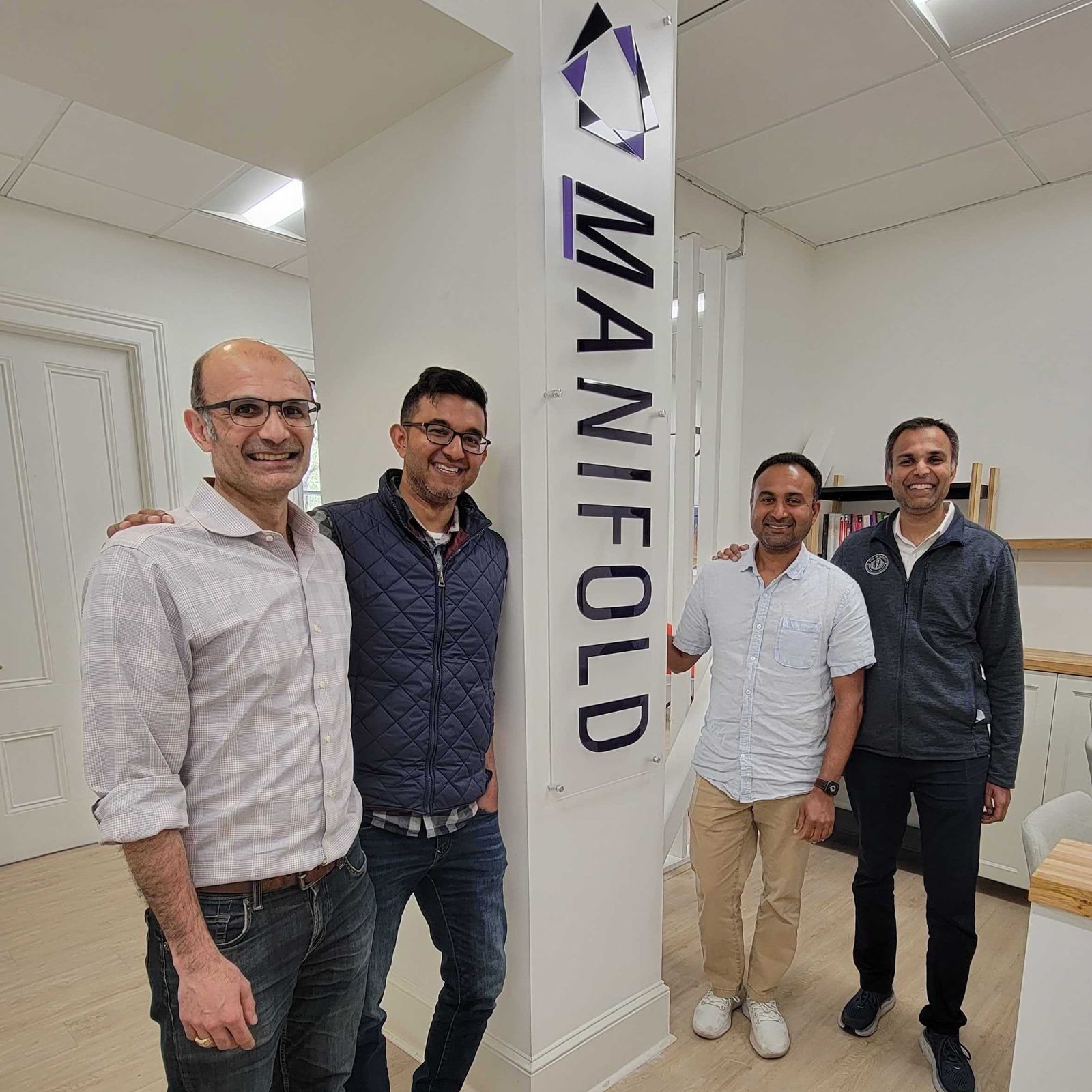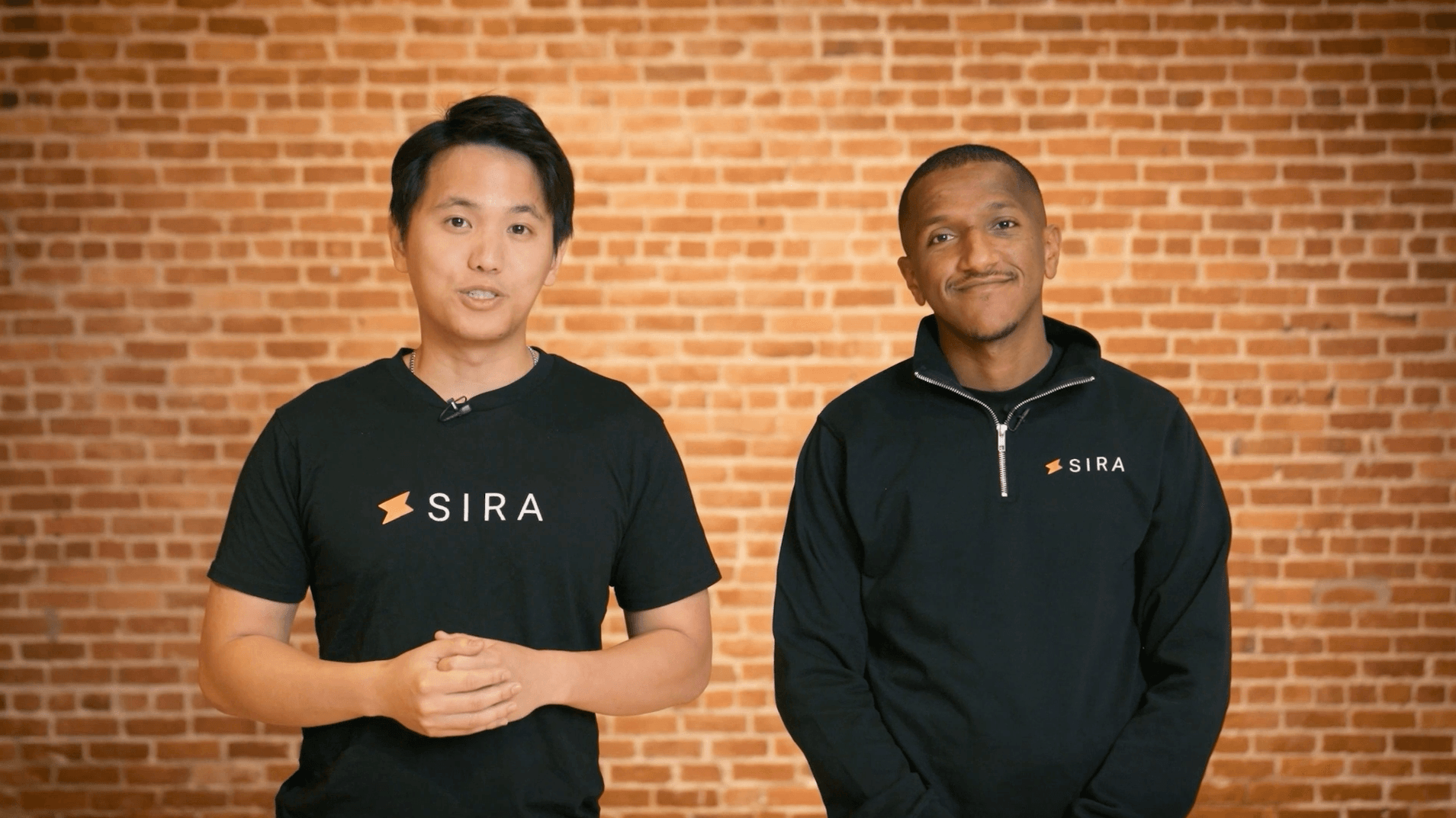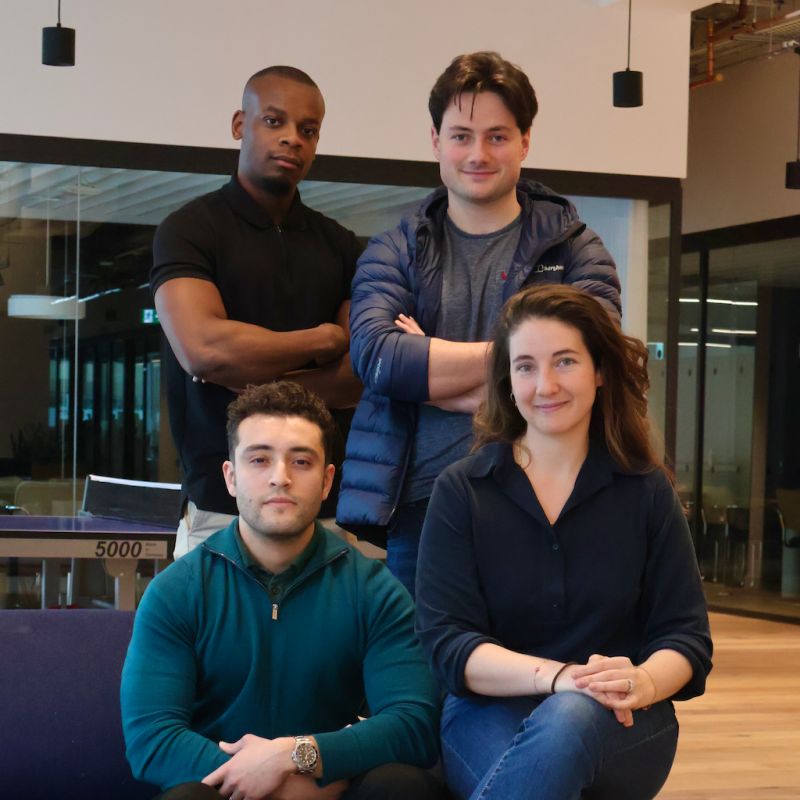Should My Edtech Company Sell to Teachers, Schools or Districts?
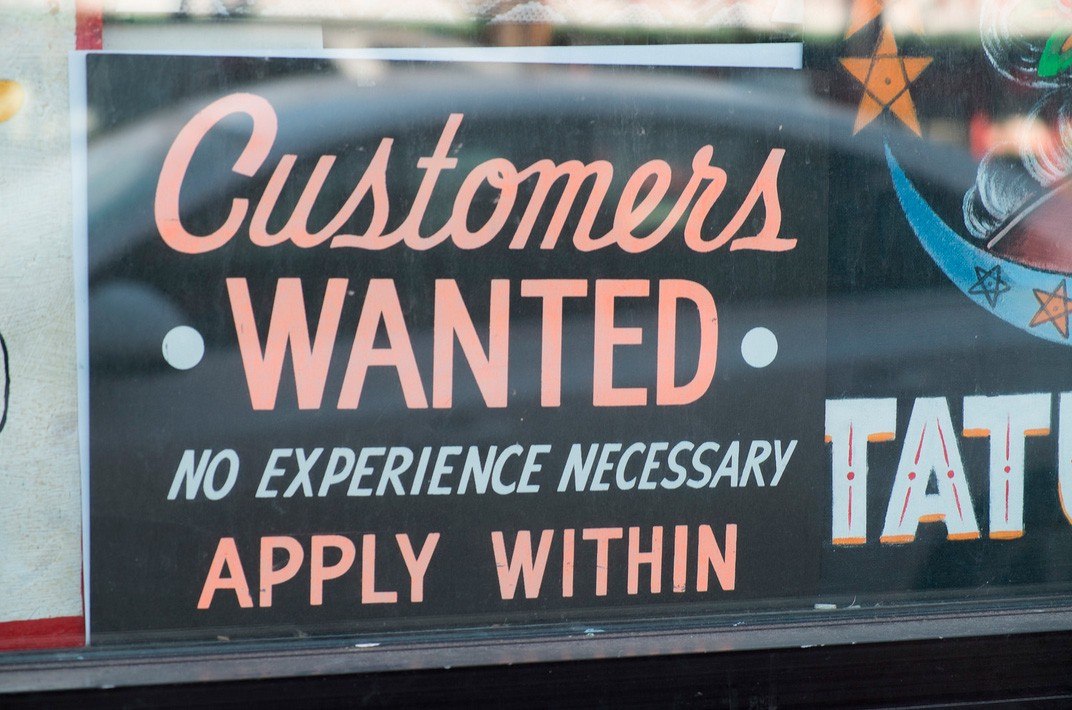
Dear Esteban,
I am working on an edtech application that teachers use in the classroom, and it also collects data that would be very useful to school and district administrators. I’m wondering where you think it makes the most sense to focus my sales efforts. Should my edtech company sell to teachers, schools, or districts?
— Trouble Focusing
Dear Trouble Focusing,
When starting a new company, entrepreneurs like you typically aren’t picky about their very first customers. Beggars can’t be choosers, after all. In education your first customer could be a teacher, a school, or (more rarely) a district. In my work at Reach, I’ve found that it’s usually an assortment — you might have a few dozen scattered teachers, a school or two, and maybe even a small district.¹
That said, if teachers use your product, focus on them first. Here are four reasons why:
1. Teachers give you the tightest user feedback loop
YC co-founder Paul Graham advises entrepreneurs to “ do things that do not scale” — and this is great advice in the edtech space. Early on, don’t be afraid to proselytize on a teacher-by-teacher basis.² It may not seem scalable, but you will create an important feedback loop between you and your most important user: the teacher. If your product doesn’t help teachers reach their goals, it’s unlikely to succeed.
Even though selling to a district would allow you to reach many users at once, you may be biased to optimize your product to satisfy the buyer (the district) instead of the user (the teacher). Fast forward a couple of years, and you could be in trouble: your long-term retention with districts largely depends on the engagement of their teachers with your product.
So: listen very closely to these early teacher-users and let your product develop around their feedback. Be open to radical change. This will help you discover the common “use cases” for your app and build the tool teachers want, instead of the tool you think teachers want.
2. The shorter sales cycle with teachers makes you more capital efficient and less exposed to risk
Consider these differences between a teacher, school, and district sale:
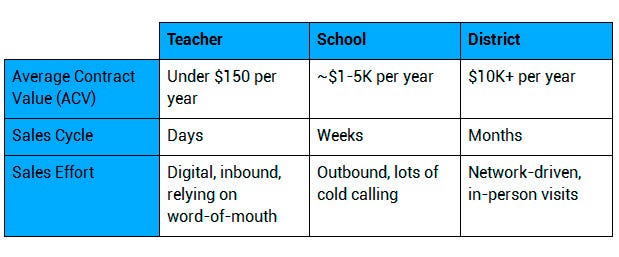
A district sale is very appealing in terms of potential contract size, as it can scale to tens of thousands of dollars depending on the district size. However, districts tend to require a lot of working capital in terms of resources and time spent on those sales. Selling to districts generally requires visiting in-person, talking to various constituents in charge of the decision making process, and, as a result, often involves months of negotiations. District sales may also demand that your organization is capable of conducting site visits for pilot management, customer success, and, in some cases, implementation services.
This is not necessarily a bad thing, since the larger investment implies larger annual contract value (ACV). But as a small startup you’re taking a huge risk pursuing this strategy. What if you spend all your time and money courting a district, and ultimately can’t close the deal? On the other hand, the teacher-first approach helps you be capital efficient — the time and money you spend selling quickly turns into new users.
Another consideration here is velocity to market. Imagine if you take a year to sell a big deal with a district while your competitor goes to market right away with teachers. Your competitor is going to be getting immediate feedback (see reason #1) and will be way ahead of you in terms of product development by the time you get your product into the hands of your first customer. Yikes.
Edtech Sales Channels
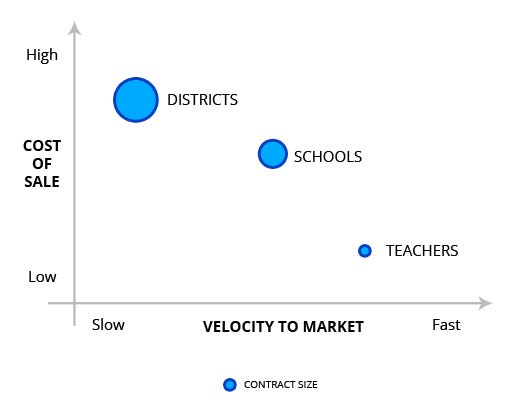
3. Teachers become your advocates
We’ve seen many examples of teachers who become power users of an edtech product and then band together, almost like a proxy sales staff, to convince their principal or superintendent to adopt the enterprise version of the app. Who wouldn’t want a free sales team working for you within the education system?³
4. It’s finally possible
Five years ago, a teacher-first strategy wouldn’t be feasible. Many classrooms were not internet connected, very few schools were 1:1, and not a lot of students owned smartphones. But the recent proliferation of devices in schools (and in teachers’ and students’ pockets) allows for entrepreneurs to go directly to their end users and grow from there. In the early days of your company, why waste time trying to navigate the red tape of an entire school district when you can use devices that are already in the classroom to gain immediate traction?
These are the reasons why at Reach I often encourage companies whose products are used by teachers to start distributing to teachers first, even if the ultimate “payer” is going to be the school or district. Of course, for edtech products that are not meant to be used by teachers — for example, a school lunch management app — this advice may not apply. But for many edtech products, the teacher-first approach has many advantages that put you in a position to grow quickly and build the product that is best at helping kids learn.
¹The exceptions, of course, are solutions that involve district-wide implementation, like Schoolzilla or Clever.
²This doesn’t necessarily mean you should be “selling” to teachers; it’s more important to think about promoting teacher adoption. (I’m a big fan of the freemium model in K-12 edtech, but that’s the subject of another post.) If you can get teachers using your product, you’re doing the most important thing right.
³We look more at this “B2C2B” strategy in our post about possible business models in edtech.
